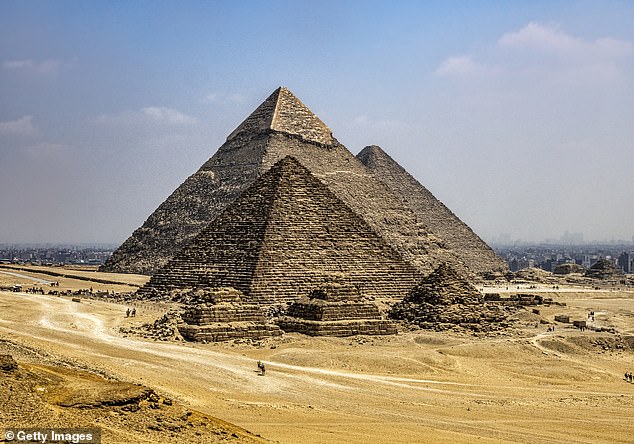
Haunting Ancient Enigma: Emerging Hypothesis on Egypt’s Subterranean Pyramid City
Mystery Deepens Beneath Egypt’s Pyramids: Lost Civilization Theory Revived
[Image: Pyramids of Giza with caption: "Ground-penetrating radar reveals vast underground structures near the Khafre Pyramid, sparking new debates."]
The Pyramids of Giza, already shrouded in mystery, have sparked fresh intrigue. Last month, Italian researchers claimed to discover an extensive underground city beneath the Khafre Pyramid using ground-penetrating radar. Their unpublished, non-peer-reviewed study describes chambers and shafts stretching thousands of feet, reigniting fringe theories about a lost civilization influencing the pyramids’ construction.
Comet Cataclysm and a Forgotten Society
Alternate historians like Graham Hancock suggest a sophisticated prehistoric society was obliterated by a comet strike 12,800 years ago, triggering global floods. Survivors allegedly passed advanced knowledge to later cultures, including ancient Egyptians. Geologist Dr. James Kennett cites evidence of North America’s Clovis people vanishing around this time and impact debris in Syria, 1,000 miles from Giza. He theorizes Mediterranean or Nile flooding could have devastated Egypt, aligning with cataclysm narratives.
[Image: Temple of Edfu hieroglyphs with caption: "Texts describe a flood destroying the ‘Eldest Ones,’ possibly linked to a comet."]
Mythology Meets Geology
Researcher Andrew Collins connects these events to Egyptian mythology. The Temple of Edfu’s hieroglyphs reference a primordial flood erasing the “Eldest Ones,” described as an “enemy serpent”—a potential comet metaphor. Collins argues this aligns with Giza’s underground networks, possibly housing relics of this lost culture. Mainstream scholars dismiss the texts as symbolic, noting no direct Giza references and interpreting the “serpent” as mythological.
Controversial Discoveries and Ancient Sophistication
[Image: Radar scans showing underground chambers with caption: "Italian team maps 4,000+ feet of tunnels and chambers beneath Giza."]
The Italian team, led by Filippo Biondi and Egyptologist Armando Mei, claims their radar data reveals structures exceeding 4,000 feet. Critics demand peer review, but proponents highlight sites like Göbekli Tepe in Turkey (9600 BCE) as evidence of advanced post-Ice Age societies. Collins points to 30,000-year-old Gravettian cultures in Russia, which built lunar-aligned structures and wore tailored clothing, suggesting overlooked chapters in human history.
[Image: Research team with caption: "Armando Mei (center) and colleagues conducted the controversial Giza survey."]
Skepticism and Speculation
While mainstream archaeology rejects these claims, the findings fuel fascination. The underground complex, if verified, could reshape Giza’s narrative. Yet, scholars caution against conflating myth with history, emphasizing the lack of concrete evidence linking the comet impact to Egypt.
Conclusion
Whether the underground city withstands scrutiny or not, it revives enduring questions about humanity’s past. As technology unveils hidden layers of ancient sites, the line between myth and history grows ever thinner.
[Image: Göbekli Tepe with caption: "Turkey’s 11,000-year-old Göbekli Tepe challenges traditional timelines of civilization."]
Word count: 598


